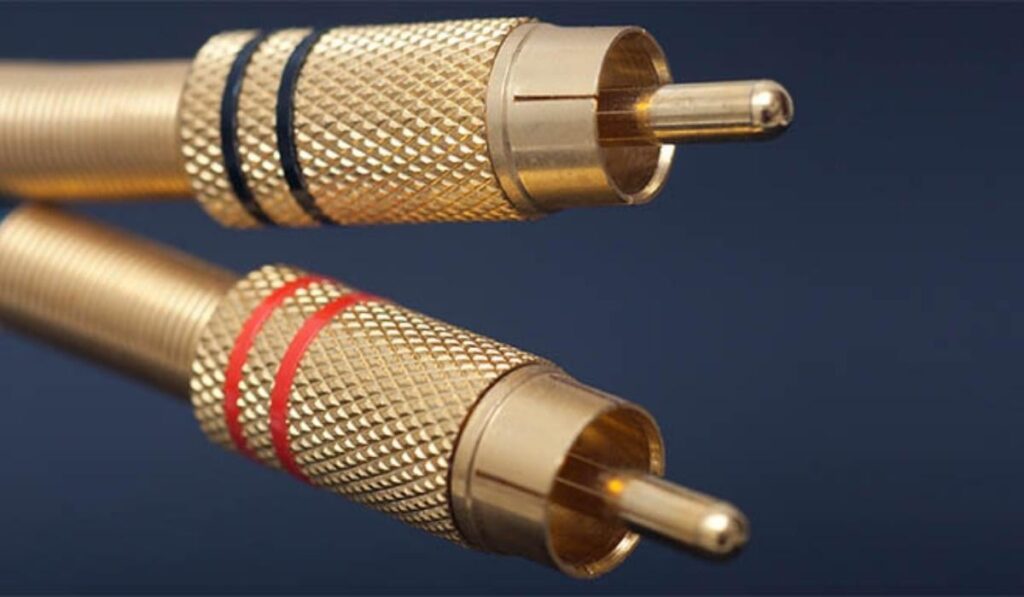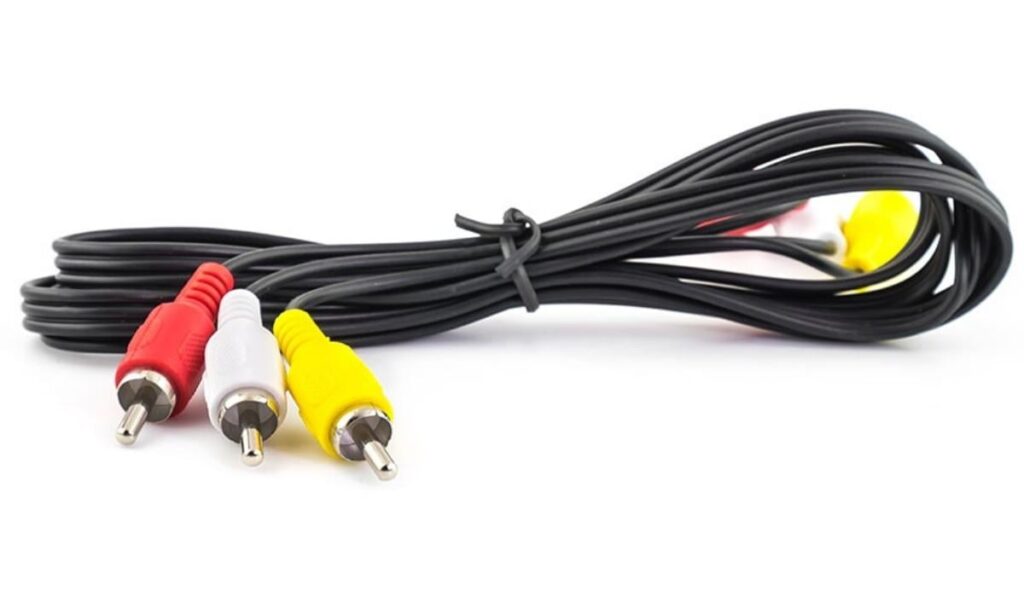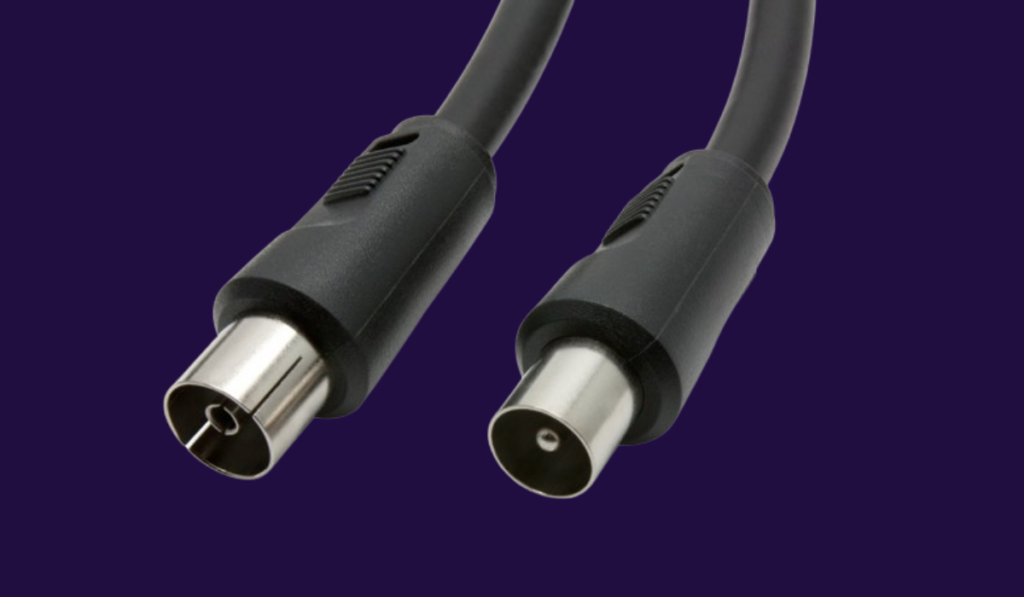If you want to connect your TV to a receiver, an HDMI cable is usually the way to go. If you happen to not have an HDMI jack on your TV, your receiver, or both, you may be searching for alternative ways to hook up the two devices. Luckily, there are other options to connect your TV to a receiver without HDMI.
How do you connect a TV to a receiver without HDMI? You can use any RCA audio cable, a composite video cable, a 5-cable component RCA video cable, or an HDMI converter that matches the input option you have available.
Whether it's your TV, your receiver, or both devices that don't have HDMI connections available (more on HDMI cables in our guide), you can use an RCA cable and/or a converter to connect the two. You're never more than a few cables away from getting the sound off your Television and into your sound system.
Key Takeaways
- The most commonly used alternative to connecting a TV to a receiver without HDMI cables is using RCA cables. You can opt for basic RCA audio cables, composite video cables, or component video cables. Another option is using an HDMI to RCA adapter.
- These options can be used with various receivers, such as soundbars, Sony PlayStation, DVD, and more.
Options Using RCA Cables
There are lots of different RCA cables available that contain a number of connectors: a classic red and white RCA cable, composite RCA cables which include a video channel, and a component RCA cables which have three different cables for the video channel.
You may have seen our related article on how to connect a soundbar to a TV without HDMI or Optical and, as in that case, the RCA cables are going to be your go-to option, especially with older equipment.
Basic RCA Audio Cables

A basic RCA audio cable includes two connectors: a red cable and a white cable. This RCA cable type only transmits audio, so it will work for connecting your TV and your receiver via the RCA jacks. You'll simply match up the red and white cables to the red and white jacks.
You'll find a basic RCA audio cable for under $10 at any store that sells tech goods.
Composite Video Cables

Before HDMI cables took over, composite RCA cables were commonly used for the same purpose — connecting both audio and video from component to component. They have the classic red, white, and yellow connection cables.
Composite video cables feature a single yellow RCA connector for video alongside white and red RCA connectors for audio. Composite video cables are also readily available at any store that sells tech goods. Cables like the Cmple Composite Video Cables are available in different lengths on Amazon.
Component Video Cables
A component video cable uses multiple channels of connectors/cables to transmit a video signal, rather than only one like in a composite video cable. The three cables that are used for video transmission are green, blue, and red.
You can either buy a component video cable with just these three cables included, or you can buy one with 5 RCA components, including the two audio connectors: the red and white cables. To transmit audio from your TV to your receiver, you'll need to use the 5 RCA component video cable.
Using an HDMI To RCA Adapter
Using a HDMI to RCA converter is another way to connect your two components. With a converter, you can connect your HDMI to HDMI cable on one side, and your RCA to RCA cable on the other side.
The right converter will allow you to successfully convert your digital signal to an analog signal, as long as you have the right cables to connect the two. Converters like the LiNKFOR 1080P HDMI to Component Converter (on Amazon) don't break the bank, either.
Using A Basic Cable
Connecting a TV to a receiver using a basic cable involves using a coaxial cable (usually referred to as “RF cable” or “antenna cable”) to transmit both audio and video signals.

This setup allows you to watch TV channels on your TV while using the receiver for audio amplification. Please note that the available channels and reception quality may depend on your location and the strength of your cable or antenna signal. If you choose this option, but don't have a coaxial cable, note that they are very cheap to buy (on Amazon).
How to Connect Your TV To A Receiver Without HDMI
To connect your TV and your receiver without HDMI, it's important to figure out which cable(s) you need to have, depending on the ports available on your devices. Once you have your cable(s) and/or converter, you can get started.
- Determine Cable/Converter Needs: Identify the cable(s) and/or converter required based on your TV and receiver's ports.
- Power On Devices: Turn on both your TV and receiver.
- Connect Cables/Converter: Plug in the cables and/or converter into the corresponding inputs on your devices, labeled as ‘Audio,' ‘Component,' or ‘Composite.' Use cable colors for guidance.
- Adjust TV Speaker Settings: The exact process for this will depend on your TV, but in general, it is located in the sound section of your TV's main settings. You'll change your TV's default speaker from the internal speaker to the external speaker you've just set up.
- Test the Connection: Once everything's connected, it is important to raise the volume to check for TV sound. If you hear audio from your video, the connection is established. If you ever want to use a different receiver or different TV, simply unplug the cables to break the connection.
Non-HDMI Connections To TV With Various Receivers
The options listed above can be used to connect your TV to many different receivers, including those meant for home theaters, stereo systems, or AV (Audio/Video) receivers.
When it comes to other receivers, here are some non-HDMI options available:
| Device | Alternative Cables for TV Connection |
|---|---|
| Laptop/PC | VGA, DisplayPort, Mini DisplayPort, USB Type-C, DVI |
| Sony PlayStation | Component Video, Composite Video, VGA (for older models) |
| DVD Player | Component Video & Composite Video Cables |
Frequently Asked Questions
How To Get The TV To Play Sound Through The Receiver?
Using the steps provided above for connecting your TV to the receiver should give you sound through a receiver. However, if you experience issues, you might want to adjust the audio settings on your receiver, such as the volume, audio mode (e.g., stereo, surround sound), and other preferences.
Can You Use Non-HDMI Connections On a Smart TV?
The short answer is, yes. Many modern TVs typically come with various input/output ports that allow for alternative connections to a receiver without using HDMI cables. These features are compatible with a range of television brands, including the widely favored Samsung, Roku, TCL, LG, Sony, Vizio, and Hisense models.
Do Cables Go Bad Over Time?
As we have already discussed, there are ways your cables could go bad, so always make sure to avoid excessive bending or twisting and store them in a relaxed, untangled manner.





